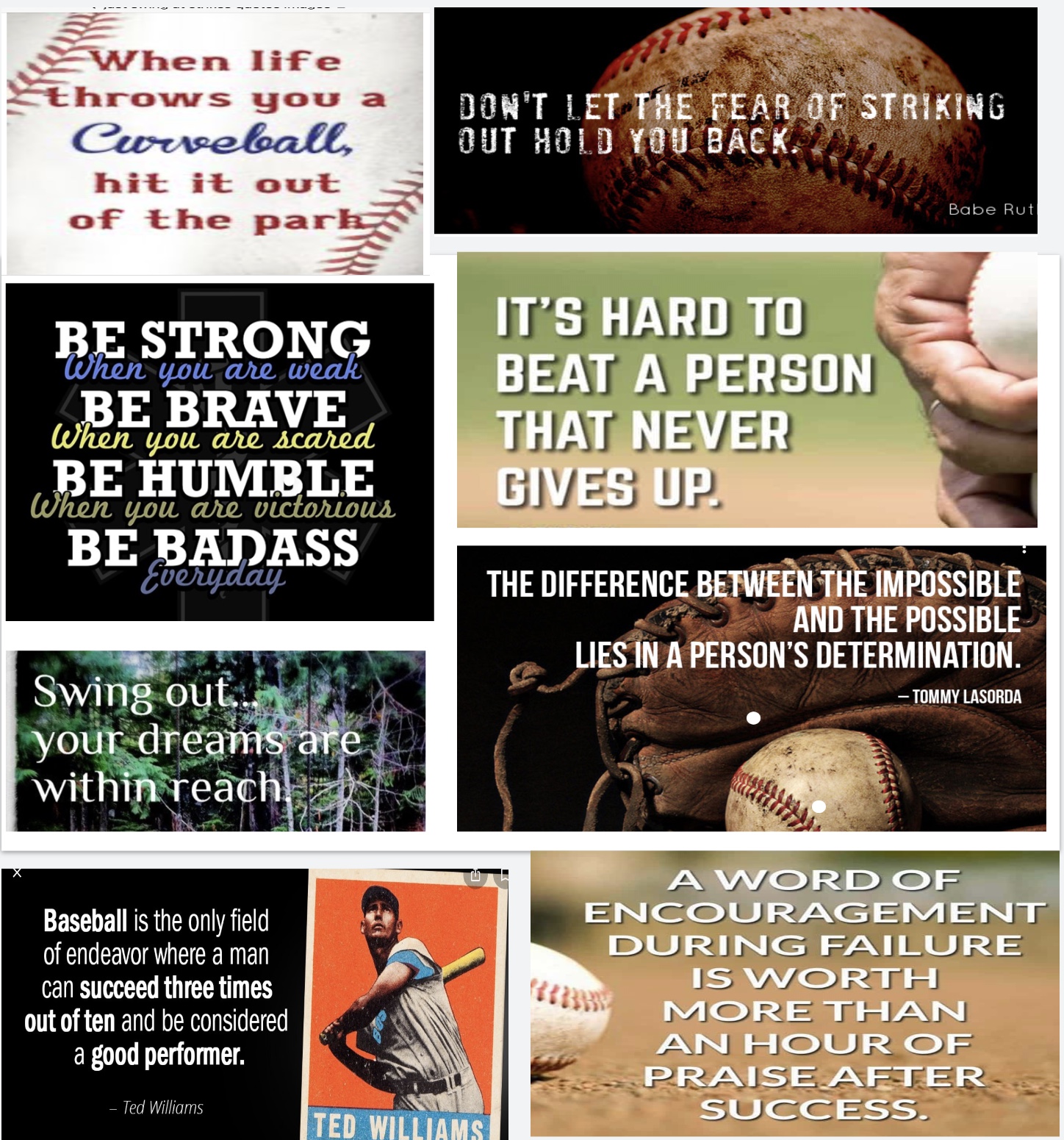
JUST SWING AT STRIKES! Simple advice, right?
Anybody older than 10 years old who has played baseball or softball competitively knows they should swing at pitches more towards the center of the plate and take borderline pitches. Unfortunately, aggressiveness must precede discipline – and the advice of ”just swing at strikes” has probably derailed many potential H.O.F. careers instead of young hitters being encouraged to TAKE A HACK.
As hitters advance though, hitting plans & approaches must involve skills of PITCH RECOGNITION, IMPULSE CONTROL & MOTOR PROGRAMMING. Anybody who ever faced an elite pitcher, in a pressure situation knows there is NOTHING SIMPLE ABOUT THE PROCESS.
Ted Williams said, ”Hitting is the hardest skill to perform in all of sports”.
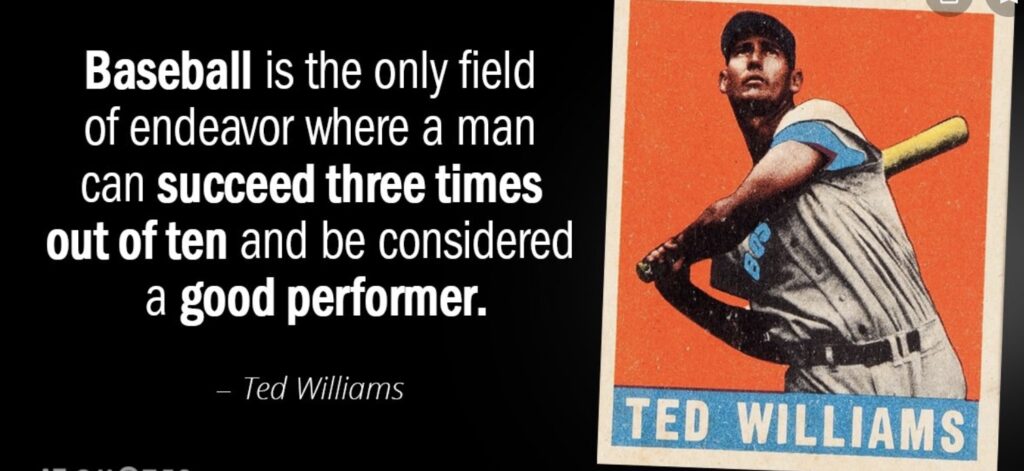
Look no further than the greatest basketball player of all time, Michael Jordan. Despite his freak, unparalleled athleticism and intense competitiveness & work ethic, still could not make him a MLB hitter. It takes way more than just work ethic, athleticism & a coach just imploring you to SWING AT STRIKES.
There are few aspects of life where you can fail 7 out of 10 times and still be considered great at what you do. Ted Williams finished his 19-year M.L.B. career with a .344 batting average. That’s a 34% success rate. CONCLUSION: HITTING IS THE HARDEST SKILL TO PERFORM IN ALL OF SPORTS; in order to succeed at it:
- You must develop better perceptual/motor processing/pitch recognition skills;
- you need more experience to expand your mental database (practice, scrimmages, games, stand-in bullpens, etc.).
- you need swing mechanics that allow to create rate of force development to transfer energy in order to have the best IMPULSE CONTROL possible;
- your strategic approaches should allow you to pre-programmed motor programs that can be relied on in big game situations.
The velocity of the average fastball in MLB is more than 90 m.p.h. from less than 60 feet away or in college softball, more than 60 m.p.h. from less than 40 feet away. A hitter has about 150 milliseconds to decide whether to swing or take; the ball is only in the hitting zone for less that 10 milliseconds. & it is not just simple reaction timing or hand-eye coordination, because pitchers are trying to cross up hitters.
PITCHING IS ABOUT CROSSING UP HITTERS
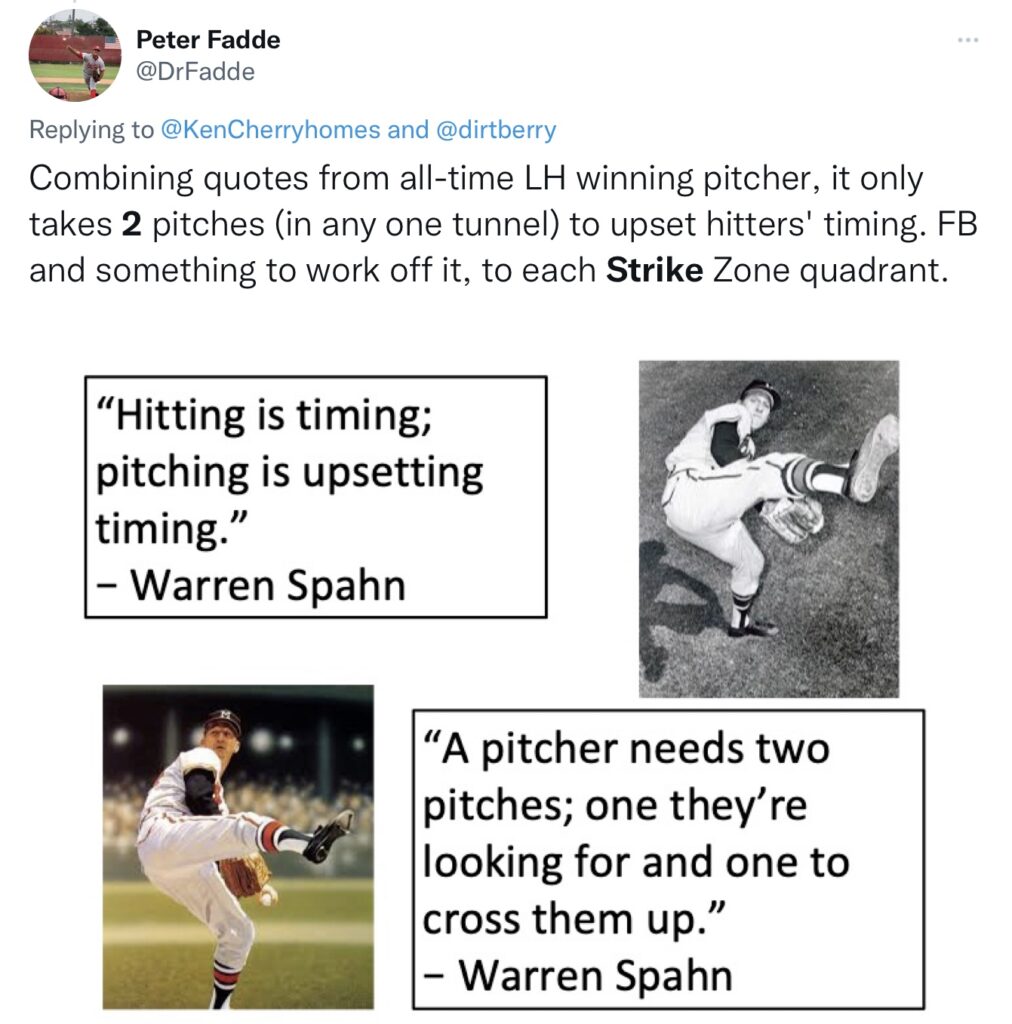
Whether you believe in effective velocity or pitch pairing or tunneling, all hitters should be aware that pitchers have become much more sophisticated in their PITCH DESIGN and how to CROSS UP HITTERS.
- This involves mixing velocities – changing linear speeds;
- it involves changing spin rates to different quadrants;
- pitchers mix locations – varying north & south or UP & DOWN.
- Others work side to side or east to west or mixing INSIDE & OUTSIDE.
- Pitchers can throw the same pitch for a strike or to entice a chase.
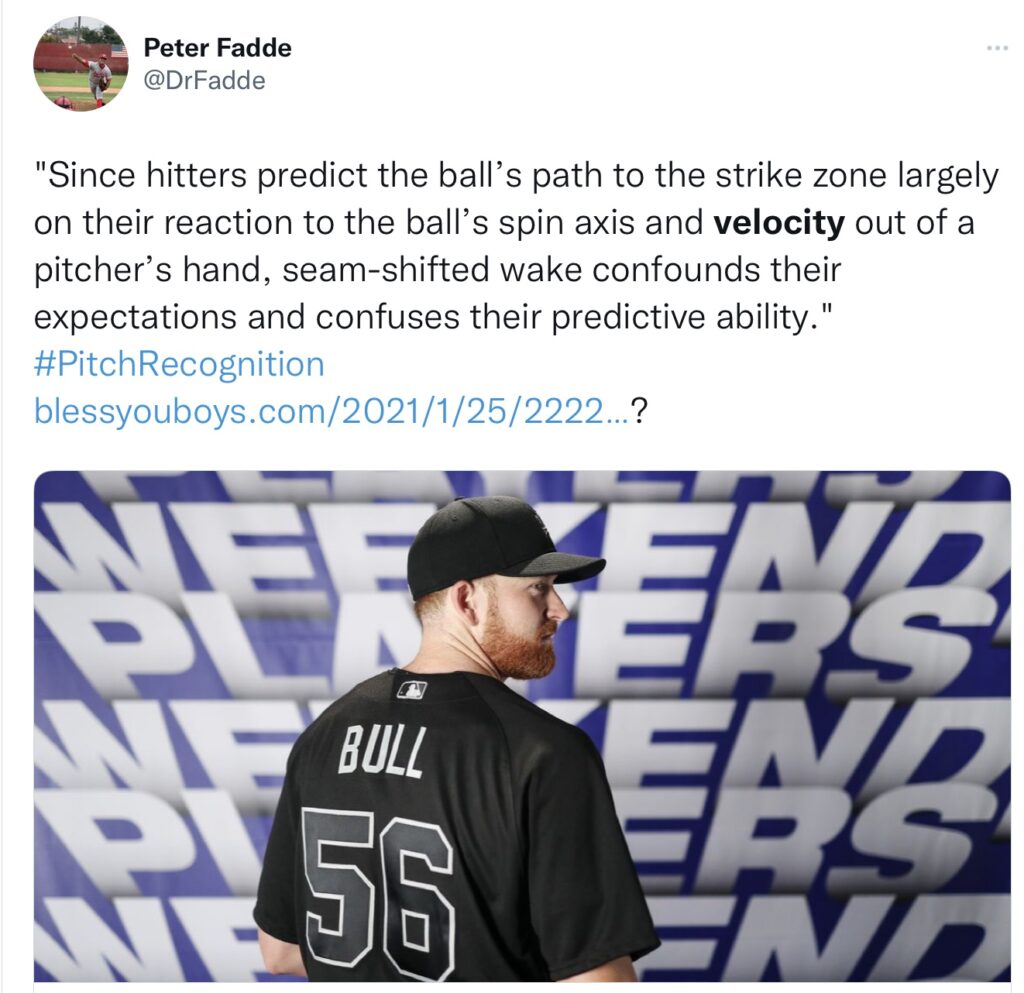
HITTING IS PITCH RECOGNITION & IMPULSE CONTROL
When the ball comes out of the pitcher’s hand, at different times along the path of the pitch from the release to home plate, the hitter has to decide:
- when to APPLY IMPULSE FORCE;
- when to transition from coil to rotation;
- how to adjust at different moments to apply force;
- how to create a ”BUFFER” for the pitcher’s changes in speed;
- when to create maximum force & transfer of energy to drive the ball;
- what motor program to use to match the pitcher’s pitch;
- what swing mechanics adjustments or flexibility are required for this pitch.
If the pitch is a FASTBALL – velocity on the inside part of the plate – then the hitter needs to apply the impulse force ASAP, IOW, the hitter transitions from coil to rotation EARLY and probably has started rotation BEFORE toe touch.
If the pitch is an off-speed (change-up or curveball in baseball), the force is applied LATER. (See previous SWING ATTRACTORS articles on how to create a ”BUFFER” to adjust to changes in linear speed of the pitch).
HITTERS HAVE TO BE PREPARED TO ADJUST & APPLY FORCE AT DIFFERENT MOMENTS BASED ON WHAT HIS/HER EYES RECOGNIZE ON THIS PITCH &/or based on his/her swing plan/approach.
The goal at higher levels is more consistency in hard hit/barreled balls rather than just swinging at strikes and just making contact. Hitting plans & approaches at higher levels involves more than just strike zone discipline – it’s more specifically about hunting a certain type of pitch in a certain location in the right situation and being on time to DO DAMAGE.
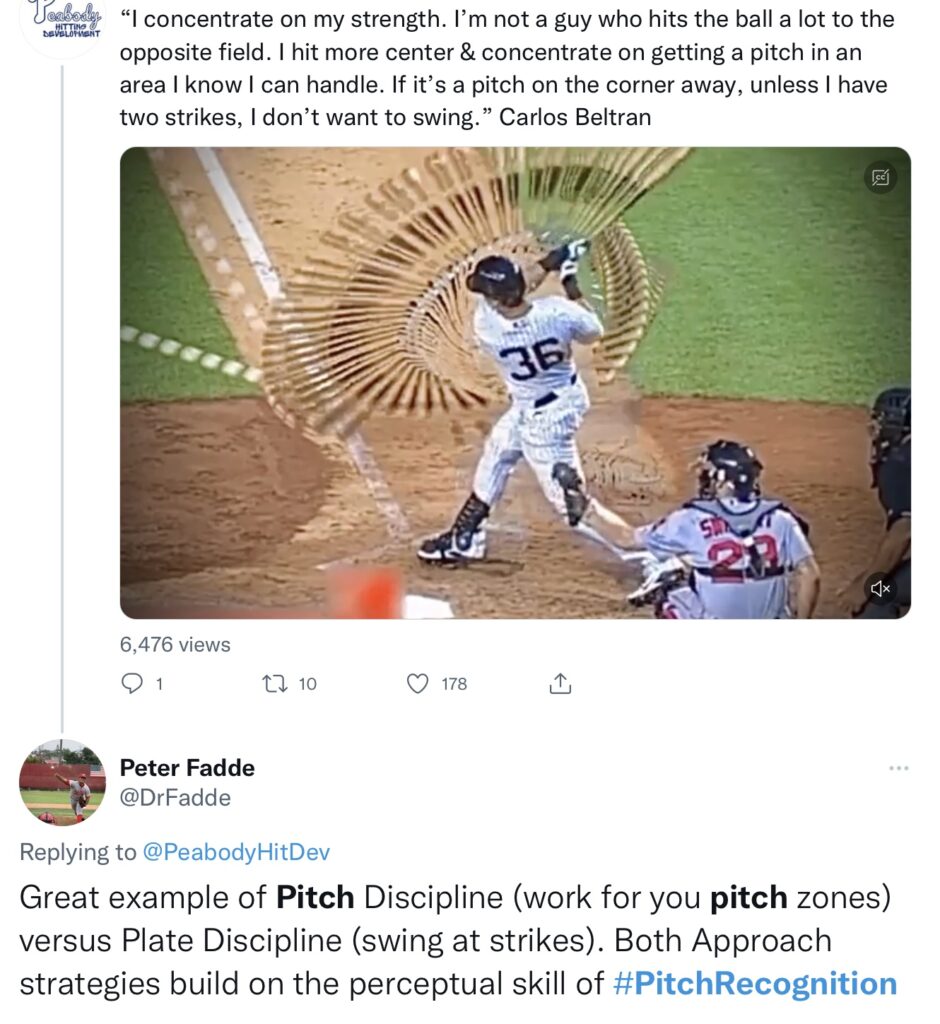
Hitting a baseball is MORE THAN JUST APPLYING OR TRANSFERRING FORCE TIMELY or how fast your bat speed is – it involves how LATE & EFFECTIVELY YOU CAN STOP YOUR SWING (IMPULSE CONTROL) when you see it’s not the right pitch. The decision to swing or stop is way more important than just the ability to create raw bat speed.
Good swing mechanics maximize the amount of time in MILLISECONDS that hitters have to shut down their swing OR to make in-swing adjustments to get the barrel to the ball.
The ability to identify pitches versus whether it is “your pitch” or ”the pitcher’s attempt to cross you up” is MOST RELEVANT.

A hitter can see or recognize PITCH LOCATION early by such cues as the angle of the pitcher’s hand or how the ball comes out of the pitcher’s hand. There are hints about what’s coming out of the pitcher’s hand that the hitter can spot in the pitcher’s delivery. You can generally see the direction of the pitch based on arm angle or wrist angle as it comes through.
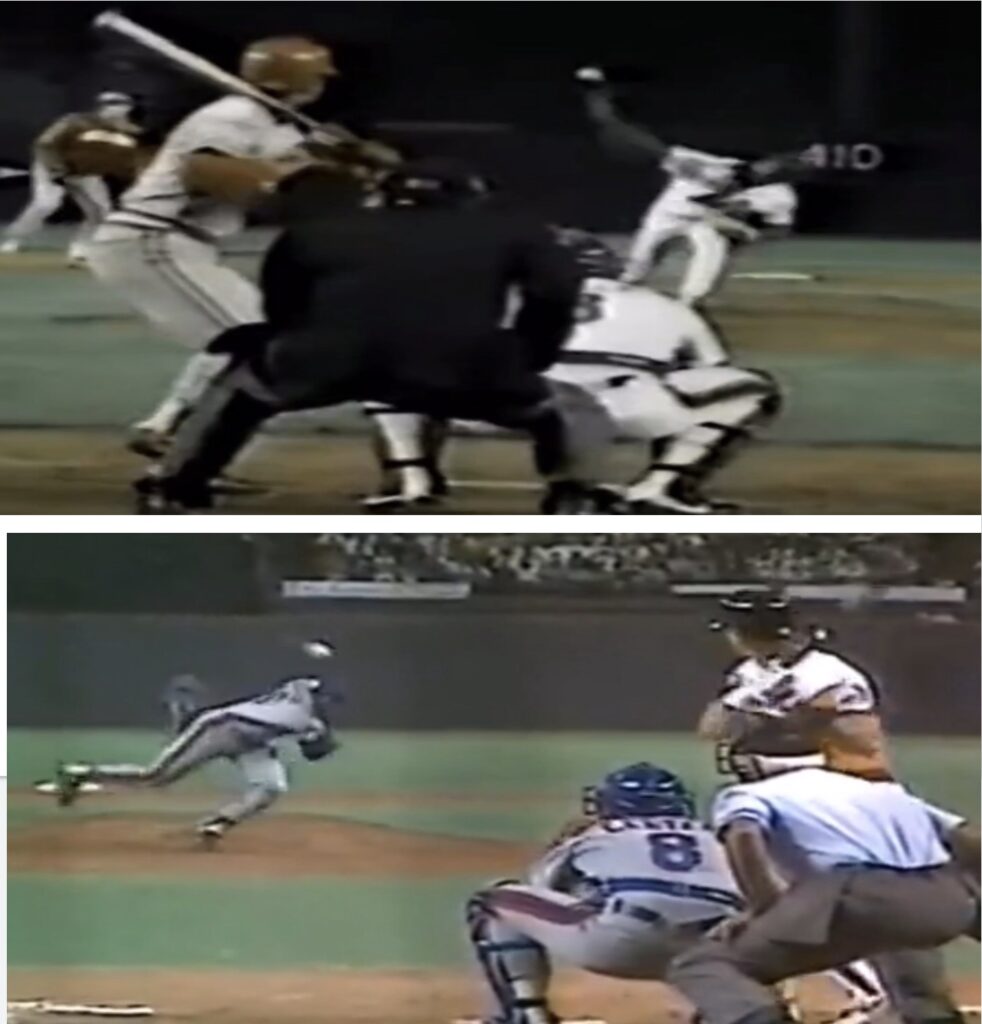
Hitters’ minds – THINKING FAST – unconsciously and almost instantaneously connect the dots from the pitcher’s release to contact with their barrel.
If the pitch STOPPED AT RELEASE (like in the photos above and with the training protocols developed by Dr. Peter Fadde with GameSense) & everything went black, the great hitter could fill in the rest of the path & shape of the pitch and visualize in his/her mind the rest of that pitch to the catcher’s glove.
The hitter should also KNOW the motor program he/she will use for his/her swing to crush that particular pitch. PITCH RECOGNITION, IMPULSE CONTROL & MOTOR PROGRAM.
GET YOUR PITCH
When pitchers use PITCH DESIGN to cross hitters up, then:
- hitters use their experience, practice preparation & database of pitches;
- hitters must recognize pitch patterns and pitch ”pairing”;
- hitters must connect the dots early;
- hitters must determine WHETHER TO LAY OFF THE CHASE PITCH;
- hitters decide to STOP THEIR SWINGS;
- hitters use IMPULSE CONTROL to transfer the FORCE;
- hitters decide to stay on the secondary pitch that hangs or misses in their sweet spot;
- hitters ignore coaches and parents who yell, JUST SWING AT STRIKES (bad advice at 10 years old, & still bad advice at higher levels too);
- hitters read & recognize the pitch EARLY and ACCURATELY; and
- hitters make the best swing decisions & adjustments.
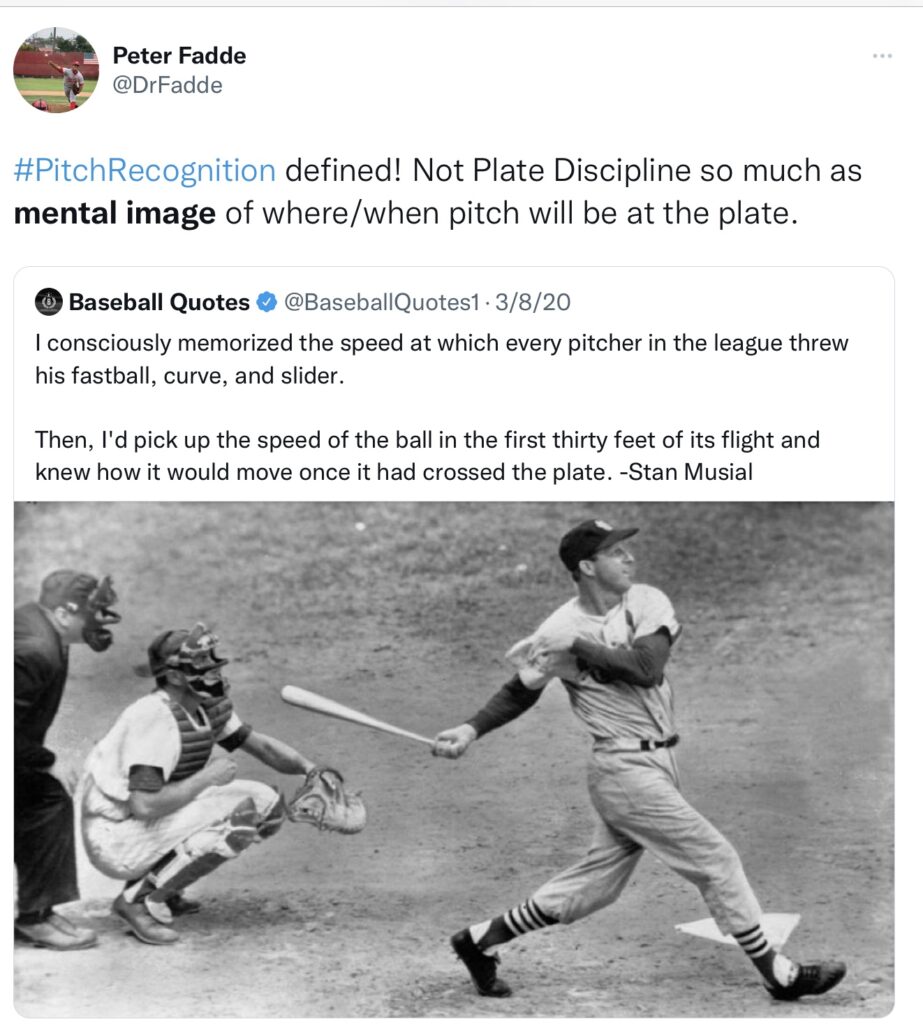
PURSUE EXCELLENCE & WIN THIS PITCH!
About the Author

Mike Lotief coached 17 successful years as either the head softball coach or co-head softball coach with his wife Stefni Whitton Lotief at the University of Louisiana from 2002-2017 with an overall coaching record of 731-176 (80.6 winning percentage). Every season, the Ragin Cajuns softball team advanced to the NCAA tournament and also advanced to three (3) Women’s College World Series (2003, 2008, 2014) and from 2012-2016 advanced to five (5) straight NCAA Super Regionals. Coach Lotief produced over 40 All American selections and his 2017 team lead the nation in scoring and was ranked in the Top 10 in home runs, slugging percentage, on base percentage.
The coach is a cancer survivor (twice) and was the first person in the U.S. to receive the Pro Trach device. Mike and Stefni spearheaded and raised the funding to build the new softball stadium in 2009 and the new softball indoor hitting facility in 2015. They are proud parents to Chelsea, who played softball and graduated from the Univ. of Louisiana in 2018, and Andrew, who is a junior at Louisiana studying Mechanical Engineering.
Previous Articles in this Series
- The Mental Swing Attractors: Failure Cannot Break You (Nov. 11, 2021)
- Training Insights: “Swing Attractors” by Coach Mike Lotief… the Flaws of Pelvic Loading (Nov. 9, 2021)
- The Mental Swing Attractors: Push Yourself… You Don’t Have to Be #1 to BE #1! (Nov. 4, 2021)
- Training Insights: “Swing Attractors” by Coach Mike Lotief… Pelvis Loading, Part 2—The Planes of Movement (Nov. 2, 2021)
- The Mental Swing Attractors: Remove the Rope from Your Ankle & Get Rid of the Limiting Beliefs! (Oct. 28, 2021)
- Training Insights: “Swing Attractors” by Coach Mike Lotief… Pelvis Loading, Part 1—It’s All in the Hips (or Somewhere Deep Below) Oct. 26, 2021
- The Mental Swing Attractors: Champions are Developed by Devotion & Discipline! (Oct. 21, 2021)
- Training Expertise: “Swing Attractors”… the Secrets of Power Hitting by Coach Mike Lotief (Oct. 19, 2021)
More About Mike Lotief
- Why Michael Lotief is a Legendary Coach? by Jay Patel
- The Secret To Michael Lotief’s Success. By Jay Patel
- Michael Lotief Fights for Rajin’ Cajuns by Graham Hays ESPN
- Michael Lotief: Taking His Sport to New Heights by Neha Kapoor
- For the Love of the Game: A Look at Ragin’ Cajun Softball’s Power Couple
- How Louisiana-Lafayette’s Michael Lotief Develops Hitting Gems by Graham Hays ESPN
